#Delicatessen culture
Explore tagged Tumblr posts
Text
The Deli Man Ziggy Gruber | Tales From Hollywoodland
New Post has been published on https://esonetwork.com/the-deli-man-ziggy-gruber-tales-from-hollywoodland/
The Deli Man Ziggy Gruber | Tales From Hollywoodland

In this episode of “Tales from Hollywoodland,” Ziggy Gruber of Kenny & Ziggy’s New York Delicatessen shares his deli expertise and experiences. The hosts, Julian Schlossberg, Arthur E. Friedman, and Stephen Jay Rubin, delve into the history of delis and Ziggy’s personal journey in the business. They discuss Ziggy’s time in Los Angeles, his move to Houston, and the celebrities who’ve visited his deli. The episode also touches on the 2014 documentary “The Deli Man,” which spotlights Ziggy’s dedication to deli culture.
Links
Tales From Hollywoodland on Facebook https://www.facebook.com/talesfromhollywoodland
Tales From Hollywoodland on Instagram https://www.instagram.com/talesfromhollywoodland/
Tales From Hollywoodland on YouTube https://www.youtube.com/channel/UCdLX2kbwHqdn47FNN6vVN7Q
Kenny and Ziggy’s New York Delicatessen https://www.kennyandziggys.com/
We want to hear from you! Feedback is always welcome. Please write to us at [email protected] and why not subscribe and rate the show on Apple Podcast, Spotify, iHeartRadio, PlayerFM, YouTube, Pandora, Amazon Music, Audible, and wherever fine podcasts are found.
#ZiggyGruberinterview #TheDeliMan #Kenny&Ziggys #TalesFromHollywoodland #jewishcuisinediscussion #Delicatessenculture #NewYorkdelistories #JewishAmericanheritage #Delifoodtraditions #ZiggyGruberconversation #Delicuisineexploration #Delicultureinsights #Hollywoodfoodscene #Delibusinessanecdotes #Hollywoodfoodhistory #Jewishfoodculture #Hollywoodcelebrityinterviews #Foodindustrytrends #StevenJayRubin #Podcast #ArthurFriedman #JulianSchlossberg #ZiggyGruber
#Arthur Friedman#Deli business anecdotes#Deli cuisine exploration#Deli culture insights#Deli food traditions#Delicatessen culture#Food industry trends#Hollywood celebrity interviews#Hollywood food history#Hollywood food scene#Jewish cuisine discussion#Jewish food culture#Jewish-American heritage#Julian Schlossberg#Kenny & Ziggy’s#New York deli stories#Podcast#Steven Jay Rubin#Tales From Hollywoodland#The Deli Man#Ziggy Gruber#Ziggy Gruber conversation#Ziggy Gruber interview
1 note
·
View note
Text

After a day of work nothing soothes like half an hour in the nearby woods picking nature’s finest.
5 notes
·
View notes
Text
I love going to a Jewish deli because I'm like "man I've been sitting at this table really taking my time to eat this sandwich because it's big and I dont want to make myself sick, and im having a nice time relaxing I hope I'm not taking to long" (it's been like 45 minute), and then I look over and there are two 75 year old zaydes who were already on their second desert course when I got there and still have at least an hour to go and are deep in conversation that could last for several days and im like "oh I'm fine."
#jewish#yiddish#ashkenazi#love me a delicatessen#jewish culture#im so used to toning down my personality and trying not ro take up space and fit into waspy spaces#and then i go into jewish spaces and evedyones like "WHY ARE YOU SO QUIET#meanwhile i am yelling#i love it#live from the musain
116 notes
·
View notes
Text
Happy 71st Birthday to Academy Award Nomonated screenwriter, César Award Winning filmmaker Jean-Pierre Jeunet! ^__^
#geek#film#blog#happy birthday#filmmaker#pop culture icon#jean pierre jeunet#academy award nominee#amelie#delicatessen#city of lost children#alien resurrection#a very long engagement#micmacs#the young and prodigious t.s. spivet#bigbug#french cinema#surrealism#fantasy#sci fi#geek with clip ons#i review stuff#irs
1 note
·
View note
Text
i am SCREAMING!!!!! YESSSSSYESSSSSSSSSSSSSS ACOC is one of my FAVORITE SERIES ALL TIIIIIME!!!!!!!!
okwearebreathingwearebreathing
I’m going in-depth on the names we have thus far. Calorum is the setting that has some of the cleverest wordplay ever, period, and I want to know EVERYTHING about our new guys!!!!!
let’s get this one out of the way
Colin Provlone (Zac Oyama) - Provolone is a kind of cheese. Colin is a name of Irish/Scottish origin. It’s nice to have one simple one.
Bishop Raphaniel Charlock (Brennan Lee Mulligan) - hmmmm are we going to get an actually Bulbian cleric/warlock this season????
Anyway, the scientific name for wild radish is Raphanus raphanistrum, so that’s probably where Raphaniel came from.
wild radish has two other names - “jointed charlock” and “white charlock”. So there we go.
Your typical red radish (as Brennan described his character to look like) is a subspecies of Raphanus raphanistrum called sativus.
but!!! even MORE interesting!!!! you know what order and family radishes are in? the order BRASSICALES in the family BRASSICACEAE!!!!! Like a certain pontifex we know of??
This could be 100% unintentional, there’s a Lot of vegetables in the family Brassicaceae, but I remain optimistic.
Lady Amangeaux Epiceé du Peche (Anjali Bhimani) - so, Fructera has always been French, natch.
She is a mango! French for mango = la mangue
Amangeaux = almonds (according to google translate, I couldn’t find this word anywhere else online, it’s extremely possible that it’s just the most French-sounding way of saying “a mango”)
Epiceé = spicy (can be used as slang for y’know. spICY)
du Peche = of peach. maybe she is of house Peach?
Karna Solara (Aabria Iyengar) - this one has me kind of stumped.
there’s the obvious karn->carn->meat connection, but she’s a chili pepper. lmk if there’s some secret vegetable lore I’m missing with ‘karna’
there’s also solar -> sun, which makes sense since the crest of Brightgarden is a big sun, and we see the DM screen this season has a big sun on it.
pLUS when I looked up scientific name for chili pepper, they come from the order Solanales in the family Solanaceae.
Thane Delissandro Katzon (Lou Wilson) -
Katzon
immediately made me think of katsudon- an egg rice bowl w pork cutlet on top.
thank you @blueaerin for your post about how this is most likely a reference to Katz’s Delicatessan, a famous deli in NYC! I never would’ve know that.
Also “katson” = Finnish for “I look” - from the verb “katsoa” meaning “to look at” or “to watch over” - probably nothing.
Delissandro - deli - deli meat
Delicatessen - the double s inspired by this?
while I was looking at Finnish stuff i found out “delissa” means “at the deli” in Finnish
Thane - y’all who read Macbeth know this one.
In Anglo-Saxon culture, It’s a title of a landowner, specifically someone who was gifted land by a king.
In Scotland, it’s a feudal lord.
There’s a connotation of military use in all of the descriptions I’ve found, so judging by the armor he’s wearing, it might be being used as a term for “commander”
871 notes
·
View notes
Text
What if Franklyn wasn't such a benign presence? He invented the anxious personality as a reason to see Hannibal after reading about him in the social pages & becoming obsessed with him. He reads everything he can about Hannibal, scouring the web for any snippet. His medical career combines with his support of the Baltimore cultural scene means there’s plenty of fuel to feed his obsession.
He puts a tracker on Hannibal's car so he can - oh what a surprise! - bump into Hannibal at a farmer’s market, or delicatessen, or at a purveyor of fine pocket squares.
He causes subtle but nasty harm to anyone Hannibal seems to befriend or spend time with.
Mrs Komeda's prized roses all suddenly die.
Alana finds her tyres slashed several times within a few months.
Another patient who Hannibal sees just before Franklyn finds someone has keyed their car while parked outside Hannibal's office.
And Will….
The possibilities are endless. Will’s house is so isolated.
He empties bags of rubbish collected on the way out to Wolf Trap on Will's porch.
Spray paints graffiti on his shed.
Leaves strings of sausages on the front door step. The dogs can't get to them, but they create chaos inside the house as they bark at the strange man, & the sausage smell drives them wild.
Will comes home to a mess as they leapt onto tables & chairs while Franklyn was there taunting the dogs. He is puzzled by the sausages & disposes of them in case they're poisoned. This does worry him.
He calls up an ex colleague from the NOPD who now has a security company. He installs a very discrete security system for Will, mates rates.
Will is surprised to get a security notification during a lecture. On the app he sees a short bearded man park his car and approach his house with a bucket of what looks like paint. The man stands on his porch steps, bending over to pry off the lid. The camera quality is so good, Will can see the paint is bright pink. ��What the hell are you doing? Get the fuck away from my house.”
The man jumps, looked spooked and glancing around anxiously.
“Go on, get out of here or I’ll set the dogs on you! Raaaaaarrrrrrrr” yells Will.
The man drops the lid of the paint and dashes to his car, driving off in a hurry.
Will chuckles, then remembers he’s in the middle of teaching a class.
“Just interrupted an intruder. Or someone who thought my house would benefit from a Barbie makeover.” He explains, and continues with his lecture.
After the class he goes to see Bev and asks for some DNA swabs & a fingerprint kit to see if he can identify his visitor. Plus the vision from the camera is great.
An hour later while doing some marking in his office, his security app pings again.
This time…..it’s Hannibal.





#hannibal#hannigram#fannibals#hannibal crack#hannibal nbc#fannibal#nbc hannibal#hannibal fanfiction#will graham#will Graham’s dogs#Franklyn is a stalker#Will has security cameras
30 notes
·
View notes
Text
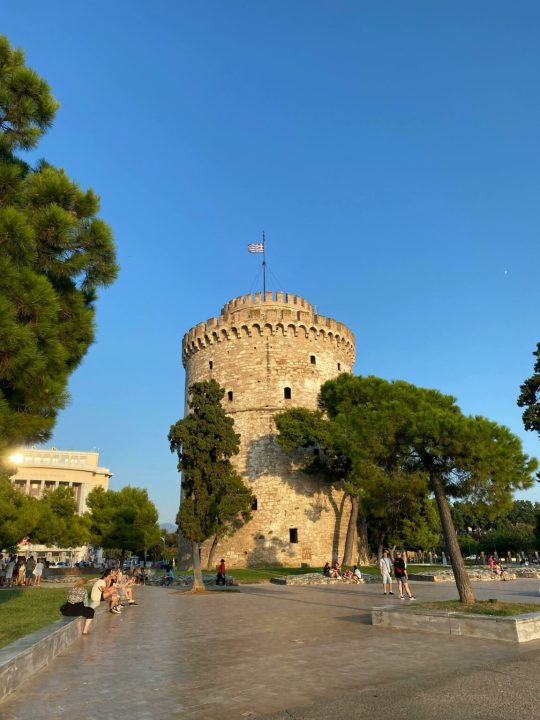
Autumn in Thessaloniki
Known as the “Bride of the Thermaic Gulf” to romantics and the “co-capital” to pragmatist Greeks, Thessaloniki bears the name of Alexander the Great’s wife and sister with pride. This city, founded in 315 BC, defies simple categorization.
How can one capture the unique energy of Greece’s second-largest metropolis, now emerging as one of Europe’s most dynamic urban centers? Or convey the rhythm of a cosmopolitan hub that cherishes its millennia-old heritage while embracing global trends? Thessaloniki is a destination that enchants travelers, whether they come for an experience-packed city break or a longer stay that never seems quite long enough.
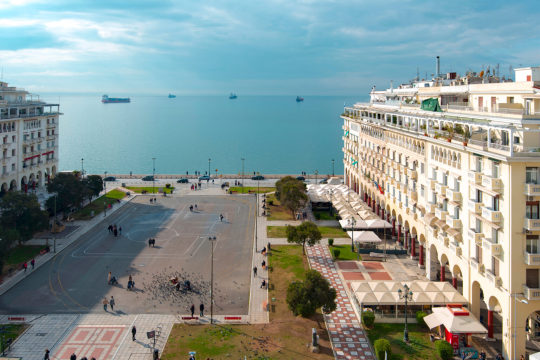
A journey to ever-relevant Thessaloniki is never just an escape or a change of scenery. It’s a multifaceted experience in a city that stands proudly among Europe’s most captivating capitals.
Thessaloniki’s love for the arts is evident not only in its domestic and international festivals and various artistic expressions but also in its fascinating museums and no fewer than 15 UNESCO World Heritage monuments. The 11 halls of the Museum of Byzantine Culture will transport you to the glorious era of the Byzantine Empire, revealing all aspects of private and public life of the period through rich collections of archaeological objects, relics, and works of art.
The War Museum presents the modern and contemporary history of our country, while the Archaeological Museum unfolds the entire history of Macedonia through masterful works of art and findings. At the Macedonian Museum of Contemporary Art – MOMus, you’ll admire works from the Iolas, Xydis, and Apergis collections among contemporary artistic trends from abroad and Greece. Two related and equally interesting cultural institutions will bring you to the Old Port and Pier A, a wonderful walk in any case. There, at the Museum of Photography, you’ll see unique images of a constantly changing city and get to know older and contemporary trends in the art of photography through a vast collection covering the period 1890-2015, while at the Cinema Museum, the magical world of Greek cinema comes to life.
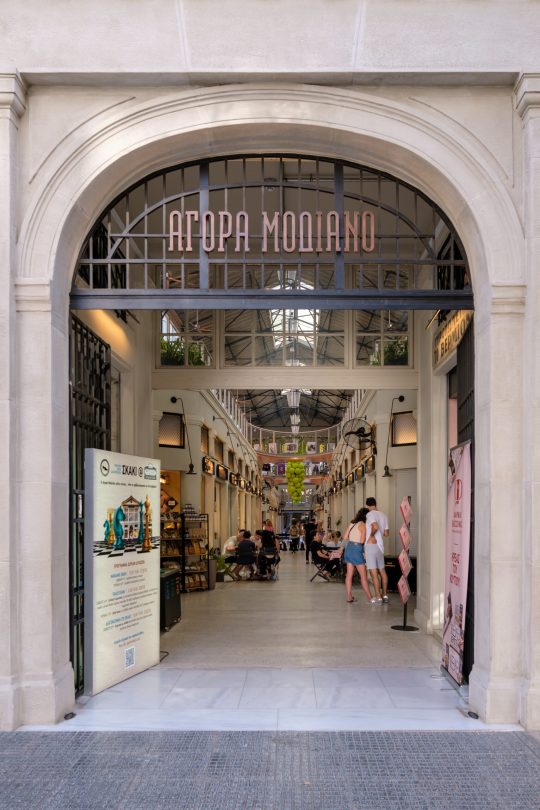
Thessaloniki’s shopping scene is also a major draw, where you can indulge in retail therapy along the three main parallel streets of Proxenou Koromila, Mitropoleos, and Tsimiski, but don’t miss their perpendicular alleys, which hide shops full of treasures. The famous covered markets are also a unique experience, such as Kapani Market, a true feast of flavors and aromas, where, following the locals’ example, you’ll drink Greek coffee at the corner traditional cafe Modigliani. Nearby, a stroll through the also covered Modiano Market, known to older generations as the “Central Food Market,” is the new must-stop on the list for foodies and non-foodies alike. The 75 stores housed in the fully renovated space, which still retains its historic architectural character, compose a unique kaleidoscope of culinary trends and proposals that has nothing to envy from similar markets abroad. After enjoying the vibrant atmosphere, you’ll stock up on select delicatessen products and indulge in one of the top sweet Thessaloniki temptations, the amazing syrupy sweets from Hatzis pastry shop.
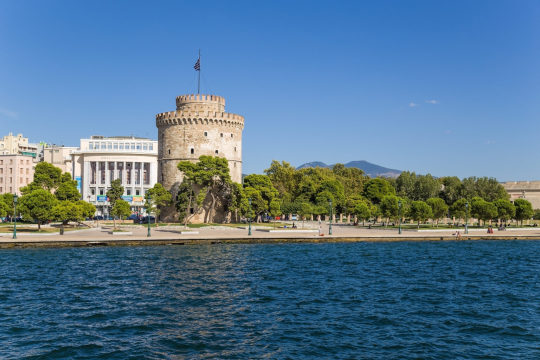
Thessaloniki’s emblematic monuments, scattered throughout the city, will enrich your walks between shopping streets, the waterfront, and up-and-coming entertainment neighborhoods with a historical dimension. Near Saint Demetrios, the city’s most important church worth a visit not only because it celebrates this month but also because it’s a monument of particular importance as the martyrdom site of Thessaloniki’s patron saint, the city’s Roman past comes alive in the ruins of the baths, square, and a gallery of the Roman Agora, dating back to the 2nd century AD. Also impressive is the nearby Kamara or Arch of Galerius, bearing the honorary name of a Roman emperor and detailed decorative reliefs from his victorious campaign against the Persians in the early 4th century AD. A few meters to the north, another recognizable landmark, the massive Rotunda from the same period, is preserved in excellent condition due to its conversion into a Christian church and is famous for its beautiful mosaics.
Daily inspiration. Discover more photos at Just for Books…?
11 notes
·
View notes
Note
The non-warpers.
Mary-Beth Gaskill is regarded as one of the greatest female writers to exist, up there with Shelley and Austen. In the foreword of her best novel, she writes: “to Kieran.”
Orville Swanson’s annotations and teachings of the Bible are so influential; his attitudes towards different ways of life cause drastic positive change to how Christians act towards those of different cultures.
On what is now the main street of a large town Rhodes, a supermarket stands, modern as any other. Behind the till, Johnathan Pearson smiles at a now faded photo of eight people around a wagon, his grandfather Simon in the front seat.
Tilly Pierre dies of natural causes in her sleep, next to her snoring husband in the largest house in Saint Denis.

Mary-Beth absolutely is up there with Shelley and Austen, which means all the school aged babies come home complaining at least once about having to read her books. The whole gang scold them for whining only to pretty much do the homework for them because they all love her novels - many of which are basically her own take on fit-it aus.
The Lady of The Manor, for example, reads as a beautiful tale of love between Susan Grade and David Vincent fleeing police inspector Mellon to the islands with her niece and Mr Vincent's apprentice, only for Ms Grade to realize the curse David Vincent claimed to be under (that compelled him to commit increasingly heinous acts) was a complete fabrication. She banished him to isolation on his precious islands while raising her niece and the highwayman's apprentice as her own children in the new world.
Mary-Beth's dedications would never mention names for the sake of protecting her past as a VDL, but the gang suspected many were to them. One of the more obvious ones was a novel titled Strawberry Roan, which was dedicated 'to the one who helped me realise I could be happy without being in my head somewhere else'. Strawberry Roan reads much more like Mary-Beth writing a 'how to look after horses for dummies' as she learned to look after the horses the gang left behind, except for a slow burning love affair between protagonist Marie and a charming stable boy who is tragically forced to flee the estate to avoid being drafted and no doubt killed in a fictional war.
Orville Swanson was such a charitable and revered member of the community he not only accidentally founded a whole new branch of Catholicism based on his annotated bible, but remembered as a significant figure in recent American history. The gang still randomly find his likeness on commemorative coins in their loose change (and usually keep them).
While his church was accidentally destroyed in a fire several years after his death, a garden was planted on the site in his honor and memory. It's a major tourist attraction featuring Orville's Fountain, with wishing coins thrown in collected for donation to non-for-profits and community services that support at-risk teenagers.
His legacy shows everywhere in modern era America. Arthur one day got really lost in modern era Blackwater and needed to call the gang to come get him - only to find himself standing on the corner of Orville St and Swanson Boulevard.
Counter-claim Pearson lived long enough to see other grocery stores start to pop up in Rhodes as it became a bustling town and was afraid his little local store would be out-competed. Before he passed away he significantly expanded the local produce range of his store. By the time his grandson inherited it, it had become one of the best local delicatessen + sandwich shop in Rhodes and is often featured in top 50 places to eat at in America. Johnathan is also going to be featured later yoinking that character.
Not only is a photo of the gang, as passed down for generations, still proudly displayed (well, a slightly sharpened copy of the original photo, which is now kept in secure storage to protect it from UV), but his grandfather's treasured compass. It is a small shrine to his grandfather's legacy both before, during and after the VDLs: copies of his navy enlistment and honorable discharge forms, newspaper articles featuring photos of a post-canon older Pearson receiving awards for both his store, and having the best damn stew at the local fair.
Tilly Pierre lived a long and truly fulfilled life. She never knew discomfort. She found a man who loved her, and worshipped her for who she was and had always been. She saw her oldest daughter go off to marry a wonderful man who loved his mother-in-law as much as he feared her and would always treat her daughter right. She helped her youngest girl fight for the right for an education, and go on to a remarkable career. She raised sons that would never know the perils of turning to crime to survive, or fear where they would sleep that night. She died peacefully, in a bed more warm and comfortable than she could ever have dreamed of knowing in 1899, knowing every day of her life she was loved.
19 notes
·
View notes
Text

Boy Genius wrapped up Feb 2023, but I got this nice review 10 days ago.
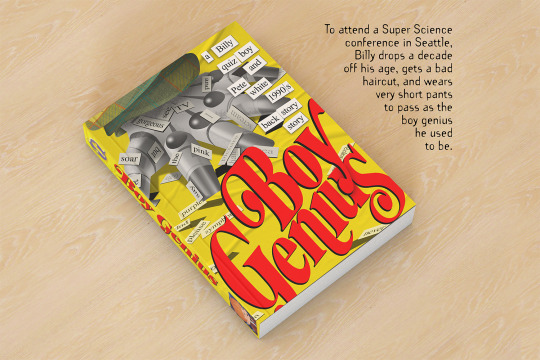
Maybe it was someone from Tumblr? If so and you're reading this, it has been the one light in a deeply hopeless two weeks— sincerely, thank you.
As I responded on AO3, I promise I will attempt to make all future backstory adventures more Eurocentric.
→ back to the Billy & White index
↓ more details ↓
Now, me, as a vulgar Ugly American— what do I know about European pop culture in the 1990s? What would have broken through to unambitious, uncultured suburban American teens?
Hmmmm... Barcelona '92 Olympics? The mascot was a scribbly dog thing. That's all I remember.
Ace of Base (Swedish) dominated 1994 with The Sign. They had another hit with All That She Wants (Is Another Baby) from the same year. Urban legends immediately started that they were Nazis and "the sign" was a swastika (an Ankh in the music video). Various levels of confirmation on that.
Do we count Björk as European?
I'm trying to think of European movies that broke through— the 1990s is the era of independent film but that was mostly focused on American auteurs. The big international hits were for an older audience— teens weren't into Lars von Trier or Three Colors Trilogy.
La Femme Nikita and Léon: The Professional (French-Italian) appealed big-time to the guys already into Tarantino and Hong Kong Action. At the end of the decade you get Run Lola Run (German), very big with teens and college students.
Billy and his date go see Jeunet-et-Caro's Delicatessen (French) in Tomorrow's Just Another Day. (Their City of Lost Children already referenced in VB for the design of Watch and Ward.)
Note, I'm excluding British pop culture, which I've already included a lot of in the fiction. The UK is still in the EU in the mid-90s, obvs, but American pop culture has a far different relationship with the British than with the rest of Europe. Even before the Beatles. "Cool Britannia" had a major hold in the US after 1997. A Ben & Jerry's ice cream. Tony Blair was on The Simpsons, before he became a war criminal. Trainspotting, Britpop and Elisabeth Hurley— God Save the Queen. As a British Comedy obsessive, I can write endlessly about the UK in the '90s—music, politics, TV, actors, comedians etc. Ask me anything about Spitting Image or all the stock jokes associated with Deputy PM John Prescott from Have I Got News for You. Except you shouldn't, it will be very boring for you.
Now the big European backstory story I have notes for would be a 1990-1991-set road trip through the Eastern Bloc and newly independent ex-Soviet Commonwealth of Independent States as Billy and White try to pick up abandoned super-science research from former state-sponsored labs for pennies on the dollar.
Starting in East Berlin, they stumble through Poland, Hungary, Yugoslavia into the Federation of Former Soviet States, heading east. White tries to trade Levis blue jeans for death ray plans. Billy mangles translating a dozen languages he barely understands (he's only 16).
They cause international incidents and nearly get killed over and over, running away to the next country. They are tailed by EuroPol, accidentally become oligarchs and have to be airlifted out of the US Embassy in Tashkent.
Tetris would be key. A Trojan Horse— it was actually a coded super-weapon meant to destabilize the west. Billy and White somehow figure it out and neuter its power while fucking everything else up.
I dunno. I might never write it but it's fun to think about.
→ back to the index
#billy quizboy#pete white#venture bros#fan fiction#fanfic#research#ao3#writer#writing#1990s#1990s nostalgia#90s#decade: 1990s#europe#comments#comment#backstory#brainstorming#on writing#storyline#fiction
11 notes
·
View notes
Text
Saw a poll on another site regarding which fantasy ancestry has the best cuisine and had to furrow my brow in incomprehension. Like we can't help but think to ourselves that if we find ourselves in Waterdeep and have the usual evening argument after a hard-day's dungeon crawling on whether we go grab a takeaway from the Dwarven delicatessen or maybe try that new Elvish fusion place down the Street of Candles?
Food is culture and culture is way more interesting than the shape of your ears.
The answer to that poll, if you were wondering, is Human. Because everyone answering the poll is human. And also, because unlike all of the other PHB ancestries, it doesn't come with monoculture baked in.
"Oh yeah, I figure Dwarves have kind of a cozy, smokey tavern-fare thing going on--"
Dude, Dwarves smith "bread" on their anvils and add potassium chlorate for kick. They eat the luster from gold. They subsist on firedamp and sulfur. They crunch down the spoil from their mines.
The lens we see fantasy through is human, I get it. But I'm on the side of weird fantasy. If you eat Dwarf food, you die. If you eat Elf food--well, you can't eat Elf food, because they subsist on Nostalgia or put down roots or, or, or...
But their takes on Human food are fine, I guess. We can talk about those. Most of these Fantasy worlds have an implied human-centric worldview (because, again, they were written by humans) and so if we assume a melting-pot of ancestries, a setting where these ancestries all sort of hang out together and history is more or less based on them all getting along, I can see them bringing their culinary traditions (weird) to serving human food filtered through the lens of their own cultural idiom. And I think that's kind of interesting, at least.
I might chew on that for a minute and build a tasting menu.
43 notes
·
View notes
Text
When Liebman’s Delicatessen opened on 235th Street in 1953, the Bronx was still sometimes called “the Jewish Borough.” More than half a million Jews lived between Mott Haven and Riverdale, and according to the 70-year-old deli’s website, they were served by 100 kosher delis. Today, Liebman’s is the last one standing.
“I ask myself a lot: ‘why are we the one that survived?’” Yuval Dekel, who has owned the deli for 20 years, told The Nosher. “Certainly because we’re in Riverdale, which is still a Jewish community.”
He surveys the restaurant, where nearly all 60 blue naugahyde seats are occupied by neighborhood regulars over 60, noshing on pastrami to the strains of ‘50s jukebox hits. “We’re a deli that has regular New York City resident customers. We’re not a tourist destination.”
Dekel, one of the youngest people in the room, took a circuitous route to becoming a deli man. Born in Haifa in 1978, he arrived in the Bronx two years later with his father, who immigrated with hopes of becoming an entrepreneur. A business broker helped the family find Liebman’s, which had foundered under a string of owners after Joseph Liebman sold it in the late ‘50s.
Though Dekel’s father (also named Joseph) was of Romanian descent, he knew little about the Ashkenazi foodways of New York. “I don’t even think he knew about delis,” Dekel said. “In Israel, there’s no deli culture.” Joseph Dekel added Israeli dishes like falafel and hummus to the menu, but took pains to preserve the deli classics, too.
For his part, Yuval Dekel was a metalhead. He was the drummer for Irate, a well-loved New York City thrash band, touring up and down the East Coast, throughout Europe and Japan, and playing at iconic downtown clubs like CBGB in the ‘90s.
“It was pretty hardcore,” Dekel laughs. “Very serious moshing going on. Quite a different environment from this.”
But during his entire stint as a metal drummer, Dekel also supported himself by working as a baker at Amy’s Bread and the original U.S. location of Le Pain Quotidien, developing a serious commitment to artisanal foods. When his father died in 2002 and Dekel took over Liebman’s, his first priority was the quality. He wanted to make sure that every dish on the menu, from sandwiches to stews, got its due.
“One thing that differentiates us from — let’s say Katz’s — is we pay a lot of attention to not just the pastrami,” Dekel said. “Don’t get me wrong, I spent years figuring out how to make our own. But there’s this whole other side to us, which is basically a full-service kosher diner.”
Liebman’s excels in the kinds of homey dishes that tend to be afterthoughts for the best-known pastrami pushers. Stuffed cabbage, stewed in a sweet-and-sour sauce and piled with melting onions and plump raisins, falls apart at the slightest pressure from a fork. On Fridays, Dekel serves cholent, the slow-cooked Shabbat stew.
That’s not to say the deli classics can be missed. Dekel began curing his own pastrami several years ago, after the number of high-quality suppliers had dwindled. The deli slices it thin so that slivers of the smoked meat’s dark crust are evenly interspersed on a sandwich. On the Liebman’s Favorite platter, pastrami is piled high on an open-faced slice of rye, accompanied by fries — thick-cut, pleasantly greasy shards of potato — and kishke (stuffed derma) slathered with brown gravy. It’s an unbelievably hefty plate of food that reminds you the object of a Jewish deli is excess.
Daintier deli classics abound. Liebman’s tender matzah balls float in a rich broth slicked with beads of schmaltz. Hebrew National franks sizzle and blister on a foil-lined griddle in the front window, ready to be garnished with sinus-clearing brown mustard, sauerkraut, coleslaw or — a Liebman’s favorite — a scoop of potato salad. Old timers pick at artfully arranged cold cut platters of sliced tongue, corned beef and kosher salami.
Homemade knishes are of the circular variety, bearing little resemblance to the squared-off “Coney Island” knishes provisioned by wholesalers to hot dog carts across the city. Like all knishes, they are dense starch-delivery systems. But a Liebman’s knish is well-seasoned, and its crust is flaky and pastry-like.
With all of his attention focused on food, Dekel says he struggled with the business side of the operation originally. But a loyal base of customers helped him through his mistakes, and the deli has hit its stride again, getting attention from critics and influencers, and even making an appearance on “Anthony Bourdain: Parts Unknown” in 2014. Dekel is planning to open a Westchester County location this year, marking the first expansion of Liebman’s in its seven-decade history.
It seems only right that Liebman’s should be the last deli in the Bronx. A mid-century time capsule, it was reinvigorated by Israeli cooking and by Dekel’s do-it-yourself spirit.
“In some cases, being the last one standing doesn’t mean you were the best,” he says. “But I happen to think that we deserve it.”
10 notes
·
View notes
Text
Some more cultural bits about Campoestela:
Making an universal graphical reference for all species is difficult. I already mentioned that things such as kissing are considered exclusive for humans, but for example, an icon that represents "family" would be very different for Humans than for Oftarans where a family is composed of the young generations caring for the dormant reproductive pupae, or the Saihisi where a family is closer, but not exactly, to the genet concept in botany. With a digital dictionary, you can show different pictures of hard to grasp concepts such as "peace", "friendship", even basic things as a "hello". But if you're just in person, it's difficult.
Even things such as "temperature" are hard to convey. You can't use a thermometer, which is different in every civilization. The color red and blue aren't necessarily associated with heat and cold in all species or even cultures. Even ice is a strange symbol for cultures that don't see it often if at all. You can imagine this gets complicated fast.
Olfactory species have it even harder. What's a pleasant odor to some is overwhelming or disgusting for others. Same with sound. Some species communicate in different wavelenghts, and you need either headphones or ear protection to talk to them.
Because of their widespread availability in asteroids, gold, silver and platinum, among many other metals, are very common in space communities. Dresses made of them are not unheard of, if a little ostentatious.
On the other hand, gems, that often require geological processes, are more appreciated. But the real expensive stuff is biological: wood, ambers, pearl, coral, ivory, and their equivalent, and all the luxury foodstuff from cheap coffee to delicatessen such as giant space chloroplasts (these are the sort of stuff Beto often tries to find good deals in)
Multi-species nations are not uncommon at all. A single planet might accomodate all sorts of species adapted to different enviroments, and a solar system with multiple planets even more, especially if it's in a busy aether route. Common trade, politics and culture often binds them together. There are, for example, millions of Rioplatenses of non-human origin (also counting Earth uplifts like dolphins, cotorras, coatis, carayá monkeys, and many more)
24 notes
·
View notes
Text

.
Another local delicacies unlocked. Smoked Meat Sandwich at Schwartz’s
The staff of Schwartz's credits the unique flavour of their smoked meat to their mandatory 10-day meat curing time, the high turnover of their meat, and their brick smoke-house covered with over 90 years' worth of buildup
Schwartz's Deli and the Montreal Hebrew Delicatessen, is a Jewish delicatessen restaurant and take-out. It was established in 1928, by Reuben Schwartz, a Jewish immigrant from Romania. Its long popularity and reputation has led to it being considered a cultural institution and landmark in Montreal.
8 notes
·
View notes
Text
El Impacto de la Migración Europea en la Educación y la Alimentación en Argentina y Nueva York
Hace un par de años, entré en un restaurante argentino en Nueva York, esperando una clásica comida de barbacoa, empanadas o chimichurri.
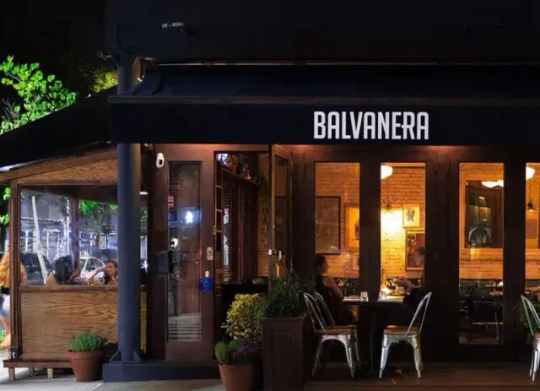
Para mi sorpresa, el menú incluía platos europeos como spaghetti alla carbonara de Italia, ratatouille de Francia y schnitzel alemán. Confundido, me pregunté: "¿Entré en el lugar equivocado?" Sin embargo, el diverso menú me intrigó, lo que me llevó a pedir la milanesa de pollo, un plato italiano que estaba absolutamente delicioso.

Este menú no era simplemente una lista de comidas; representaba la narrativa de la evolución cultural de Argentina, fuertemente influenciada por la migración europea. Como discutimos en nuestra última publicación de blog, desde 1880 hasta 1930, más de seis millones de europeos emigraron a Argentina, trayendo consigo una rica tapicería de tradiciones culinarias. Estas influencias ahora son un pilar nacional, desde las pizzas y pastas inspiradas en Italia en los restaurantes urbanos hasta las cervezas artesanales influenciadas por Alemania en los Andes.
Estos sabores europeos han sido creativamente adaptados en Argentina, mezclando ingredientes locales para formar platos híbridos únicos. Por ejemplo, la pasta italiana tradicional a menudo presenta un giro argentino distintivo, incorporando carnes y productos locales. De igual manera, la tradición española de las tapas se ha transformado en picadas, un surtido de quesos locales, carnes curadas y aceitunas que exhiben la rica diversidad agrícola de Argentina.
Como Ethan observó en su análisis sobre Guayaquil, Ecuador, "En ciudades como Guayaquil, la escena culinaria es vibrante y dinámica, con una gama de platos influenciados por la migración constante dentro del país, ofreciendo una fusión de sabores de diferentes regiones." Esta vibrante fusión de sabores es un eco de lo que sucede en Argentina, donde la constante mezcla de culturas ha creado una cocina innovadora que atrae tanto a locales como a turistas.

Aquella noche en Nueva York trascendió una simple comida; fue un viaje culinario que hizo eco de la migración de mi propia familia de Europa a América. Me recordó las historias de mis abuelos sobre cómo adaptaban sus recetas queridas con ingredientes del Nuevo Mundo. Esta mezcla de tradiciones culinarias es una piedra angular de la cocina argentina y refleja cómo las comunidades inmigrantes, particularmente las familias judías en Nueva York, utilizan la comida para preservar y evolucionar sus identidades culturales. Los inmigrantes judíos, huyendo de la persecución y buscando nuevos comienzos, trajeron consigo tradiciones culinarias que adaptaron a los ingredientes y gustos de su nuevo hogar. Establecieron emblemáticas delis judías, como Katz's Delicatessen, famosa por sus contundentes sándwiches de pastrami, bagels con lox y queso crema, y una variedad de delicias encurtidas.

Estas delis no solo han atendido a la comunidad judía, sino que también se han convertido en una parte integral del diverso panorama culinario de Nueva York, querido por personas de todos los orígenes.
Cenar en ese restaurante argentino fue una profunda lección sobre cómo la migración mezcla culturas y redefine identidades, ilustrando que Argentina, al igual que América, prospera como un crisol donde cada ola de inmigrantes enriquece el tejido nacional. Esta comida profundizó mi aprecio por los intrincados sabores de la migración y las historias conmovedoras que cada plato cuenta.
Fuentes:
https://worldcrunch.com/global-gourmet/argentina039s-nueva-cocina-fusion-stirs-life-into-traditional-recipes
https://thedeligram.substack.com/p/the-argentinian-comfort-food-you
- James Rukin
Hola de nuevo, soy Evan. Continuando desde donde James dejó las influencias culinarias europeas en Argentina, exploraremos cómo estas olas de migración han entrelazado intrincadamente un rico tapiz de idiomas en el sistema educativo de Argentina. Esto refleja el vibrante paisaje lingüístico de la ciudad de Nueva York, mostrando el poder transformador de la migración.
Cuando Argentina abrió sus puertas a millones de europeos desde finales del siglo XIX hasta principios del siglo XX, sus aulas se convirtieron en crisoles de intercambio cultural. Las escuelas comenzaron a resonar con idiomas como el italiano, alemán y francés, enriqueciendo la experiencia educativa y abriendo la mente de los estudiantes a diferentes perspectivas e ideas. Por ejemplo, la influencia italiana está profundamente arraigada en el español rioplatense, hablado principalmente en Buenos Aires. Términos como 'laburar' (trabajar) del italiano 'lavorare' y 'fiaca' (pereza) de 'fiacco' son solo algunos ejemplos de cómo el italiano se ha fusionado con el español local, reflejando la significativa presencia de inmigrantes italianos.

En la ciudad de Nueva York, la mezcla de idiomas hablados en cada calle, en cada metro y en las escuelas refleja una dinámica mezcla de culturas. Esta diversidad moldea el ambiente educativo, donde el aprendizaje de idiomas se adopta no solo como una asignatura, sino como una herramienta crucial para la comprensión y cooperación entre comunidades diversas. Cada clase de idiomas en Nueva York se convierte en una mini-reunión de la mezcla cultural de la ciudad, fomentando ciudadanos globales desde una edad temprana. Por ejemplo, las escuelas públicas en Queens podrían ofrecer clases en idiomas como el bengalí, mandarín y español, que son predominantes dentro de sus comunidades locales. Además, festivales culturales en barrios como Little Italy y Chinatown proporcionan experiencias inmersivas a través de las cuales tanto estudiantes como residentes interactúan con los idiomas en contextos vibrantes y prácticos.

Madison mencionó algo similar en su blog sobre el papel crucial de la lengua guaraní en el sistema educativo paraguayo. Desde la promulgación de la Ley de Lenguas en 2010, que promueve el uso oficial del guaraní junto al español, las escuelas han incorporado el guaraní no solo para preservar esta lengua indígena, sino también para fomentar un sentido de identidad nacional y resistencia cultural. Este esfuerzo por mantener viva la lengua guaraní a través de la educación es un testimonio del poder de los sistemas educativos para conservar lenguajes en riesgo de desaparición, y refleja un fenómeno similar a lo que vemos en las escuelas de Nueva York con la inclusión de idiomas de diversas comunidades inmigrantes.
Tanto Argentina como Nueva York aprovechan su diversidad lingüística para enriquecer las experiencias educativas, celebrándola como un recurso clave. Este enfoque común subraya el impacto significativo de la inmigración en los modelos educativos, haciéndolos más inclusivos, atractivos y culturalmente variados. En ambas regiones, los estudiantes se benefician del aprendizaje en múltiples idiomas, lo que potencia su capacidad para pensar de manera flexible y empatizar con diferentes culturas.

Nuestro recorrido por los paisajes educativos de Argentina y Nueva York subraya el profundo impacto que la migración tiene en la configuración no solo de las identidades sociales sino también de las prácticas educativas. Al valorar su diversidad lingüística, ambas áreas maximizan el potencial de sus poblaciones multiculturales para crear entornos de aprendizaje innovadores, inclusivos y bien adaptados para nuestro mundo interconectado.
Fuentes:
https://www.langroops.com/post/what-are-the-most-spoken-languages-in-new-york-city#:~:text=Spanish%20comes%20in%20second%20with,identify%20as%20Hispanic%20or%20Latino.
- Evan Contant
2 notes
·
View notes
Text

Je serai bientôt à l'antenne avec un Drôle de Coco, pas de chez Chanel non, plutôt du genre Coco-Bel-Œil 👁️ Un dur à cuire difficile à faire fondre au premier regard même si, d'abord à feu doux (et non à l'étouffée, surtout pas !), puis en maintenant une température à cœur pendant quelques minutes, il finit par se révéler (rêve ailé) tendre à souhait.
Il faut dire qu'il est notamment connu pour avoir été un boucher sanguinaire au cinéma (Delicatessen), ainsi qu'un Dragon et quelques monstres/monstresses au théâtre (300 pièces et une seule vie !).
Peut-être l'avez-vous croisé à La Grande Eugène à l'époque, Fassbinder et sa bande n'avaient d'yeux que pour sa "Toute Méchante" (aurait dit Genet) et délicieuse créature, Erna von Scratch.
Je serai donc sur les ondes de France Culture du 13 au 17 novembre (20h-20h30 chaque soir), en direct différé du Musée des Arts forains et en compagnie de Monsieur Dreyfus JC (Jessy), qu'on appelle aussi MC Rictus dans les milieux les plus interlopes, tant il a contribué à redonner vie à la verve révolutionnaire du poète Gabriel Randon de Saint-Amand plus connu sous le nom de Jehan Rictus.
"Jean-Claude Dreyfus, anatomie d'un joueur"
(À voix nue - France Culture)
Du 13 au 17 novembre 2023
20h-20h30
Philippe Bresson
https://www.radiofrance.fr/personnes/philippe-bresson
2 notes
·
View notes
Text
What’s Out This Week? 7/26
Who do we talk to to get July to stop going by SO FAST??
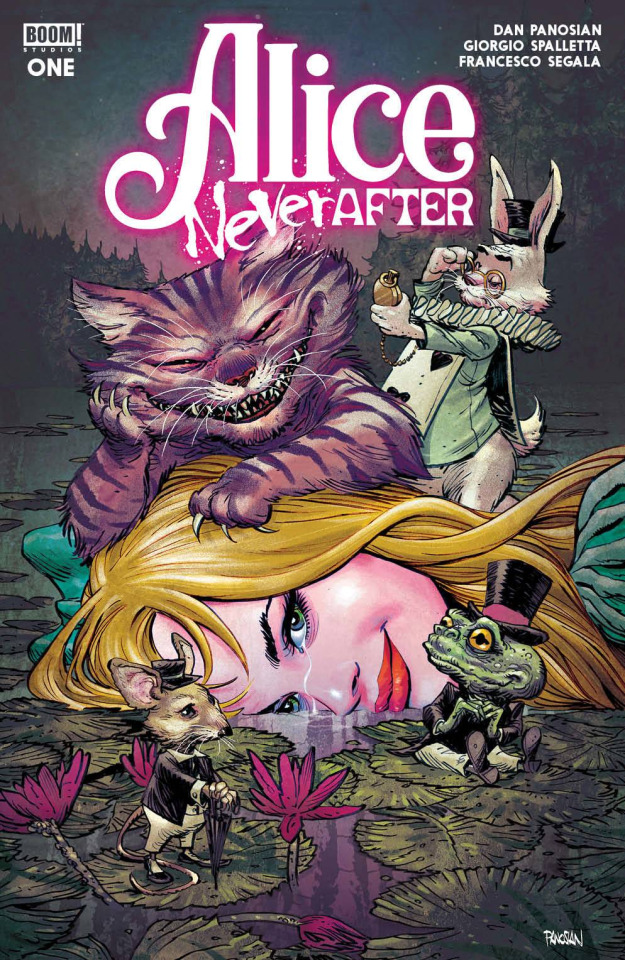
Alice Never After #1(of 5) - Dan Panosian & Giorgio Spalletta
Alice finally got her wish. Wonderland has become her new home, but with her abuser's avatar with the uncanny grin turning the mad residents of a moonstruck world against her, she's clawing for a little rationality amongst the chaos. As Alice's sister Edith and her childhood friend Earl fight for a way to bring her back, Alice has to contend with whether or not her torment is due to her father, herself, or maybe a curious combination of both...

BRZRKR: Poetry Of Madness #1 - Keanu Reeves & Steve Skroce
A sea of gore and devastation awaits as B, through a fateful chance encounter, safeguards the advanced and ancient realm of Atlantis as its unstoppable protector. But a sickly king serves as a symbol for the rot inside, as the security and bliss created through B's violence is shallow... The cracks created by a secret cult might spell a monstrous end for the legendary city, one beyond even B's ability to save.
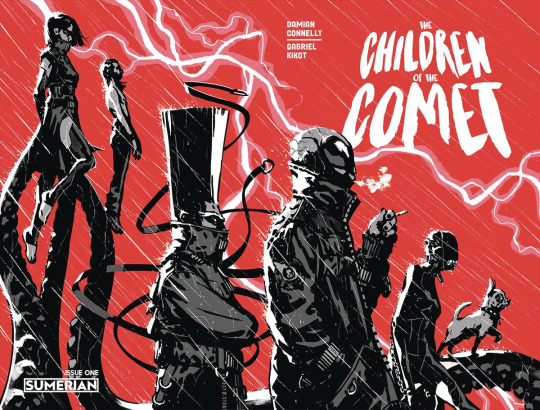
The Children Of The Comet #1 (of 5) - Damian Connelly & Gabriel Kiko
A new series set in the world of You Promised Me Darkness and Follow Me Into The Darkness! Ten years after the events of Follow, Sage and the children of the comet live prosperously in New Kolosimo. But one day before the birthday of Miracle, the daughter of Sage and Daversa, new threats appear and the children of the comet must go into action again. Satanists, psychedelic dimensions, chihuahuas that shoot laser beams from their eyes, a deadly villain who wakes up after many years of being asleep and many other oddities. Welcome back to Kolosimo, where everything is weird.
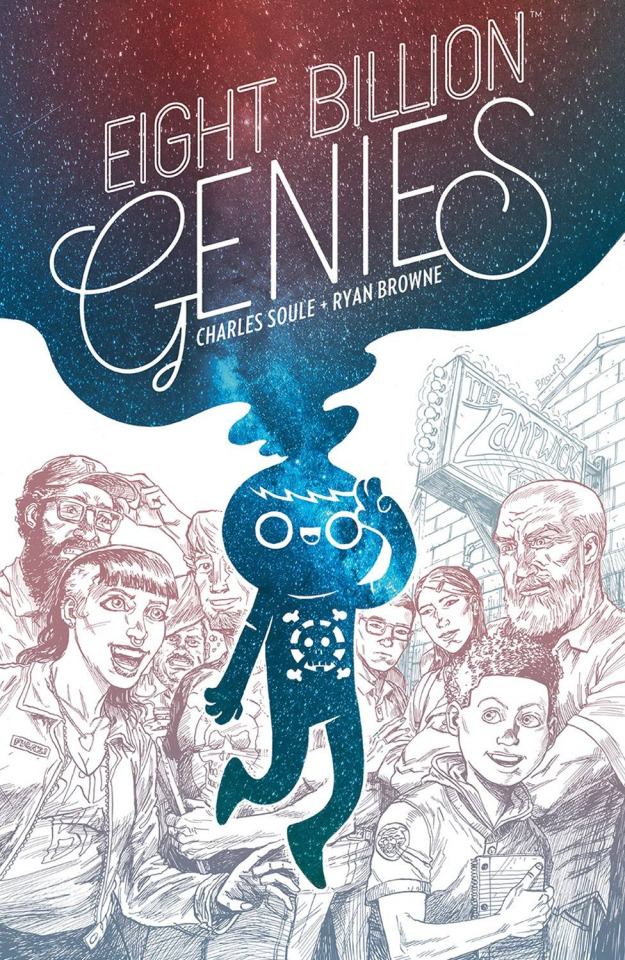
Eight Billion Genies Deluxe Edition HC Vol 1 - Charles Soule & Ryan Browne
If you had one wish...what would you wish for? What if everyone else on the planet had one wish too? That's EIGHT BILLION GENIES. Eight seconds after magical genies grant every person on earth one wish, the world is transformed forever...and that's just the beginning!
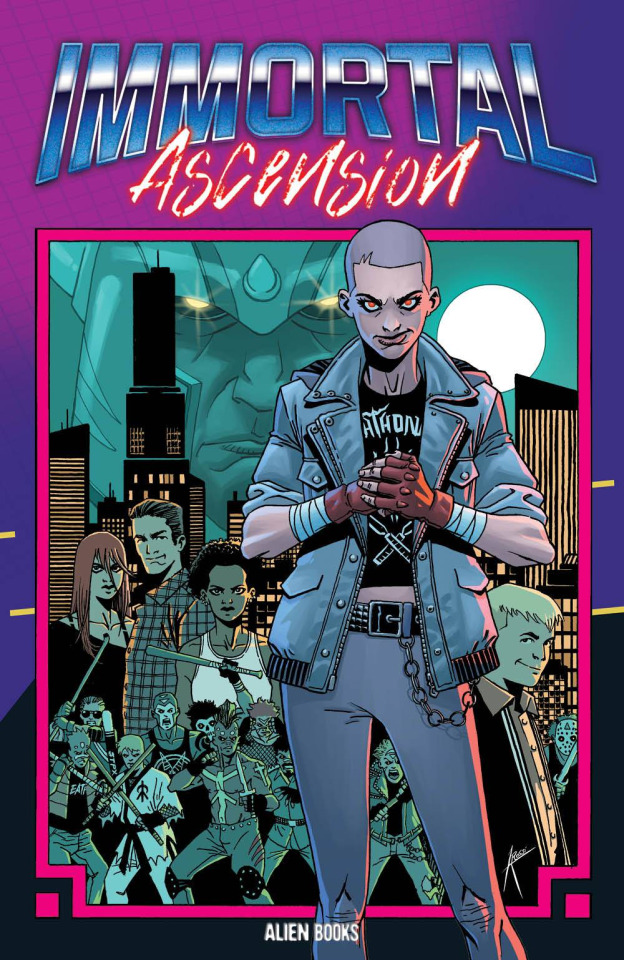
Immortal Ascension #1 (of 2) - David Chisa & Kristian Rossi
What if an Elektra type of character was thrown in an arcade game fighting style adventure? She'd be the GodKiller! Gear up for an epic tale of redemption and combat! Meet Rose, once known as the GodKiller, a fierce warrior who's seen it all - from brutal beatdowns to painful punishments. Now seeking peace and solitude, she's about to face her biggest challenge yet! As a master of the art of combat, she'll need to level up and rescue her students from the monstrous Hell Ghouls gang.
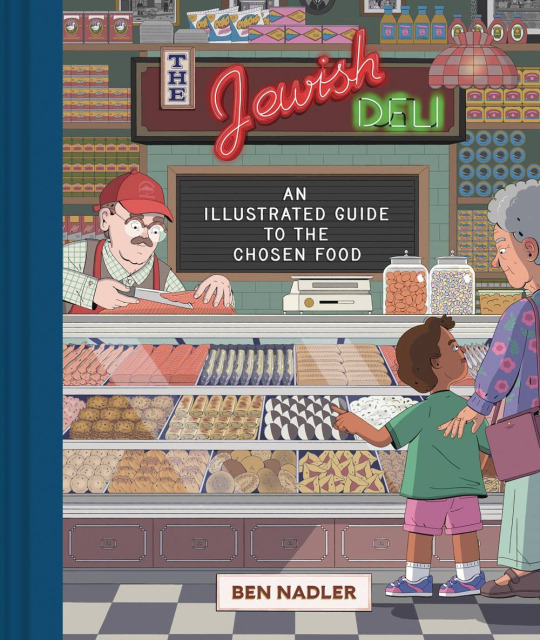
The Jewish Deli: An Illustrated Guide To The Chosen Food HC - Ben Nadler
A delightful celebration of Jewish delicatessens in an accessible comics format, full of history and humor, and guaranteed to make you hungry.
Beloved culinary and cultural institutions, Jewish delis are wonderlands of amazing flavors and great food-bright, buttery, briny, sweet, fatty, salty, smoky. . .In The Jewish Deli, comics artist and deli aficionado Ben Nadler takes a deliciously entertaining deep dive into the history and culture of this food and the places that serve it up to us across the counter.
A visual treat, this accessible and informative nonfiction graphic novel delivers stories of tradition and innovation, celebrations of iconic menu staples, flavor profiles, food preparations, ordering advice, spotlights on legendary and up-and-coming delis, and much more.
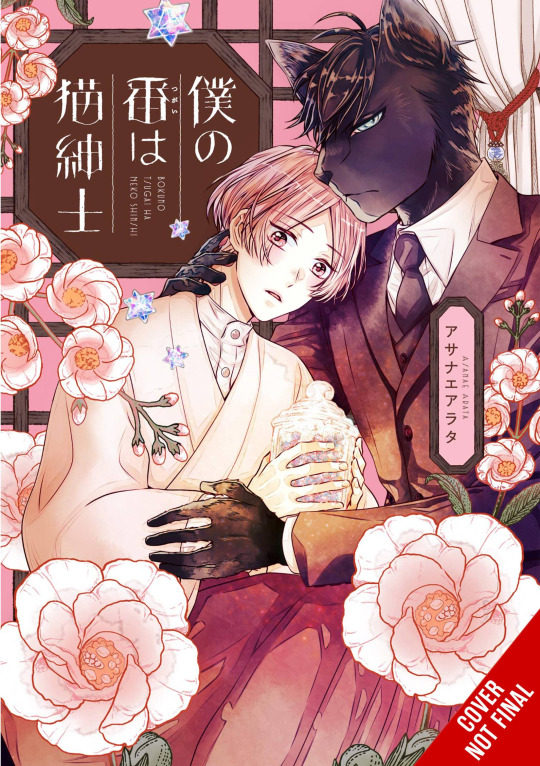
My Mate Is A Feline Gentleman GN - Arata Asanae
When Toushirou is hired as a servant for beastman diplomat Alex, he fears the very worst. As an omega, he's gotten used to being treated as a mere plaything, and he prepares to once again "serve" his feline master. But to his surprise, Alex is appalled by the treatment of omegas in Japan and treats him with a kindness he's never experienced before. Little by little, Toushirou's feelings begin to change...

Primus 7 GN Vol 1 - Nic Macari
Seven and Silva Ajamu witness the deaths of their father and grandfather by the hands of Arthur Grove. They are saved by Viktor Espinoza, a former soldier, who raises them as his own. Viktor must teach the boys how to harness their power before it's too late. Meanwhile, Grove has a dark energy brewing inside him that can alter the balance of Primordia as we know it. Can the two brothers work together and unlock their full potential?

Purr Evil #1 (of 6) - Mirka Andolfo & Laura Braga
THERE IS NO ESCAPING THE MEWING EVIL... Rita loves her daughter Deb, but a dark evil from her past threatens the lives of anyone who gets too close to it. Can the bond between two women overcome a life built on blood and lies? And what secret is lurking in the Morando family's apartment?
PURR EVIL is a stand-out story about the relationship between a mother who gave everything for her daughter and a daughter who needs to figure out her role in a world that she's about to doom!

Radiant Pink TP Vol 1 - Meghan Camarena, Melissa Flores & Emma Kubert
When video game streamer and secret superhero Eva is invited to the biggest charity stream event of the year, she sees her chance to use her platform for good. But when a surprise attack sends her hurtling across dimensions, Eva will have to rely on everything she has to make it home in one piece.
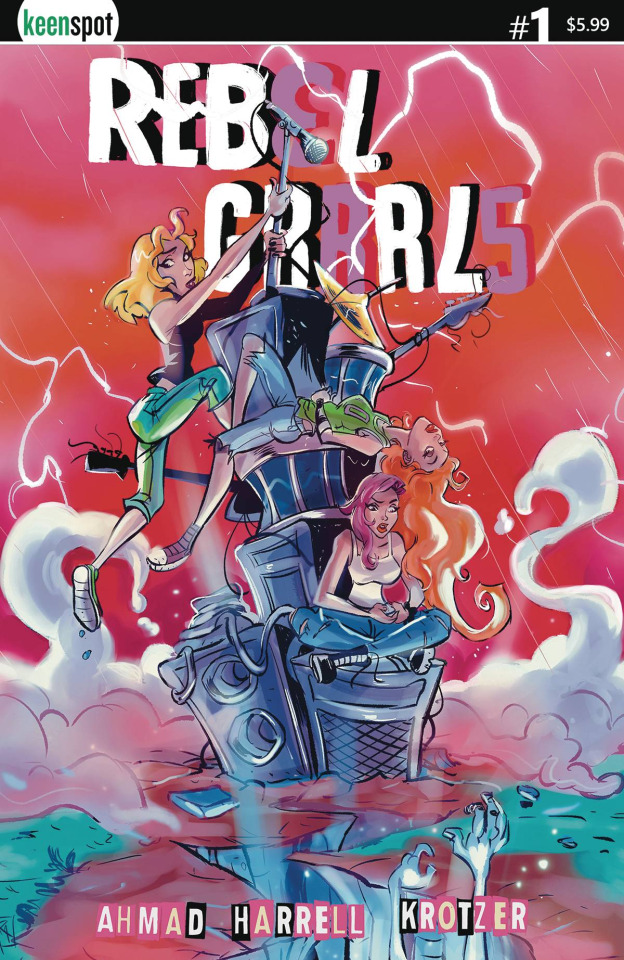
Rebel Grrrls #1 - Danny Harrell & Robert Ahmad
Cursed with the power to resurrect the dead through music, three girls from rural Alabama set out to tour dive bars, basements and county fairs throughout the south. If making it as an all-girl punk band wasn't difficult enough, these cursed souls are pursued by a ghoul, disguised as a record executive, who has been tasked with using them to resurrect enough of the dead to overthrow the living. Despite the forces of hell patiently awaiting its time to rise, these riot grrrls are intent to prove that they're no sellouts, and that they can make their mark on their own. Will it be revolution, girl style... or Armageddon?
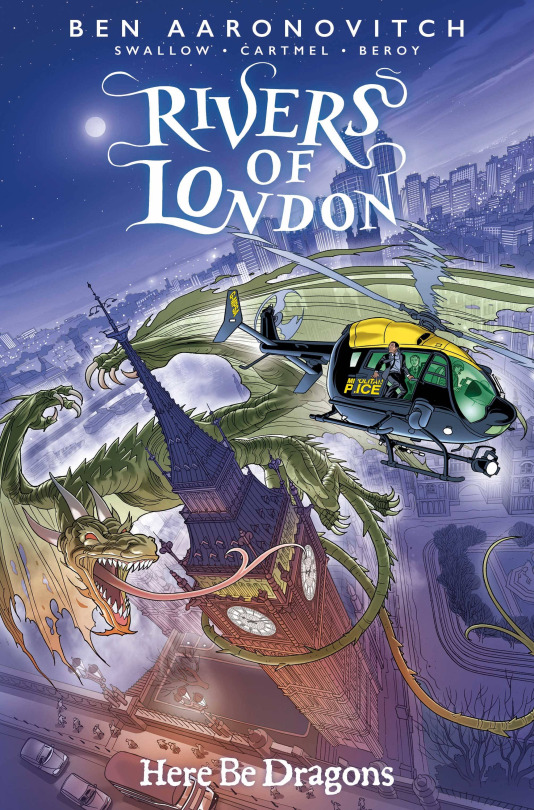
Rivers Of London: Here Be Dragons #1 (of 4) - James Swallow & Jose Maria Beroy A dangerous monster is at large above the streets of London. And its name... Wyvern! After a Met Police helicopter on night patrol is attacked by an unidentified aerial phenomena, the Met's only sanctioned wizard, Peter Grant, and his mentor, Thomas Nightingale, are called in to investigate. Peter and Nightingale find themselves drawn into a battle between two groups of hunters - one human, and one fae- as they uncover a legacy of events that extend back to the 1960s. To save the skies of the city, Peter must face the enraged beast - but can he end things peacefully... or will he be forced to destroy the last wyvern?
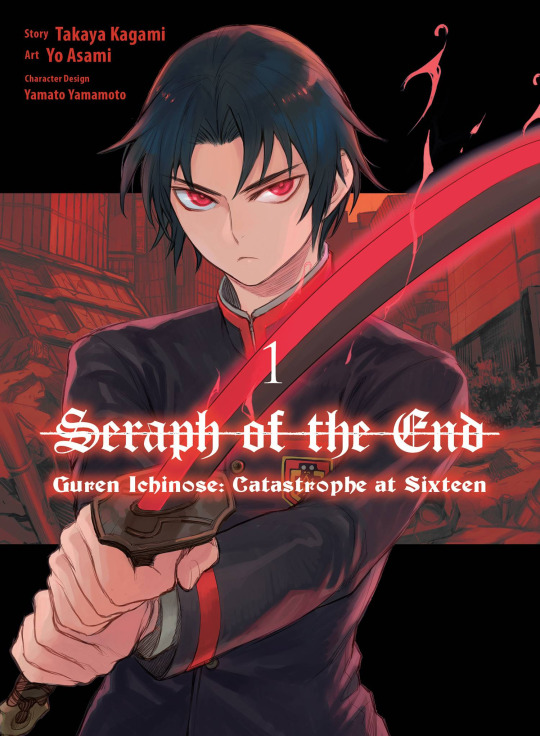
Seraph Of The End: Guren Ichinose, Catastrophe At Sixteen GN Vol 1 - Yo Asami & Takaya Kagami
Prequel to the hit manga series, Seraph of the End! Detailing the events before the apocalypse, 15 year old Guren Ichinose enrolls at Daiichi Shibuya High, a magical training school. Witness his trials as he must hide his true strength even as he is trampled on at a school for the insufferably privileged.
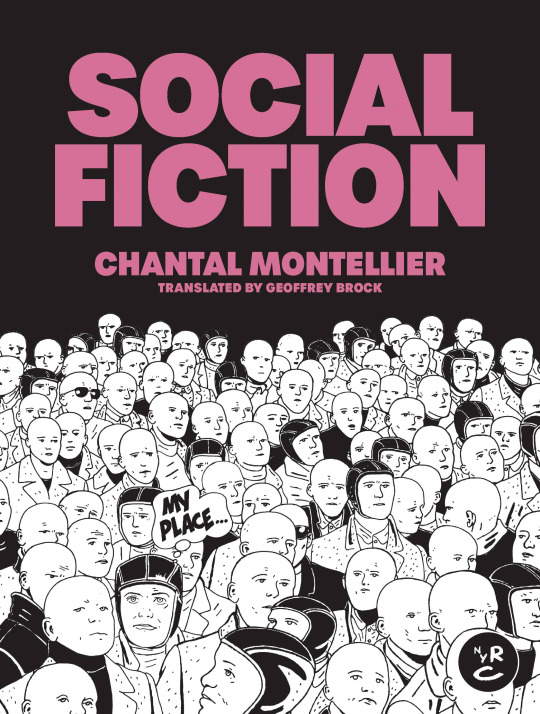
Social Fiction GN - Chantal Montellier & Geoffrey Brock
An anonymous official chides a man under surveillance for stepping out of view of a security camera; visitors to an underground mall are forced to form a new society when a nuclear strike may (or may not) have left them as the sole survivors on Earth; newlyweds living in an authoritarian New York City attempt to navigate the insidious hurdles of being permitted to have a child; and a Puerto Rican boxer discovers that segregation continues in America long after death. In this collection of three novellas, Wonder City, Shelter, and 1996, published together in English for the first time, Chantal Montellier's blend of dark humor, gripping storytelling, and consistent focus on the perils of totalitarianism, shows her to be a master of both comics and science fiction.

Soichi HC - Junji Ito
Soichi, the unhinged second son of the Tsujii family, chews nails and makes them clatter and clack as he spouts horrific curses to bring about the most bizarre happenings. Whether it's summer holidays or a birthday party, Soichi can turn any occasion into a nightmare in a heartbeat. What is the terrible secret of his origin? Meanwhile, tormented by his little brother's never-ending pranks, older brother Koichi has a soundproof room built. But why does it have a series of four doors? And then there's the strange phenomenon surrounding the handmade casket their grandfather left behind. What on earth-or hell-has the family seen there? Ten tales that celebrate the sinister and hilarious world of Junji Ito's favorite antihero, Soichi!

Stars In Their Eyes GN - Jessica Walton & Aska
Maisie is on her way to Fancon! She's looking forward to meeting her idol, Kara Bufano, the action hero from her favorite TV show, who has a lower-leg amputation, just like Maisie. But when Maisie and her mom arrive at the convention center, she is stopped in her tracks by Ollie, a cute volunteer working the show. They are kind, charming, and geek out about nerd culture just as much as Maisie does. And as the day wears on, Maisie notices feelings for Ollie that she's never had before. Is this what it feels like to fall in love? Perfect for fans of Heartstopper and Laura Dean Keeps Breaking Up with Me, this graphic novel debut is a fresh, one-of-a-kind story that celebrates the excitement of meeting someone special for the first time.
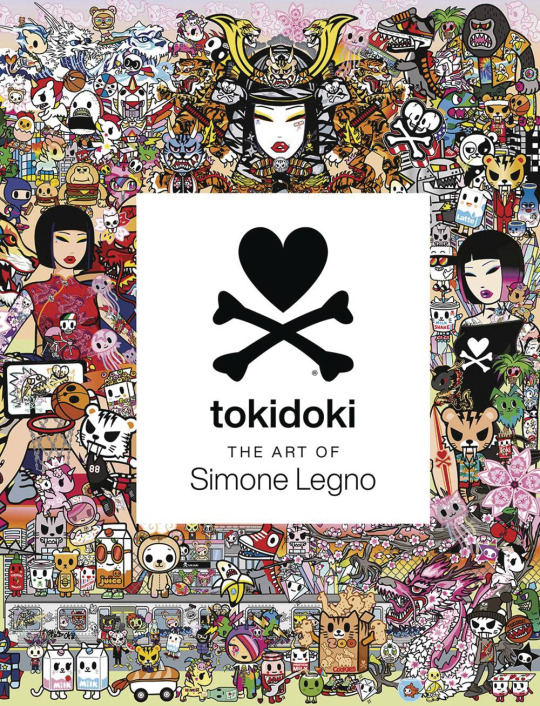
Tokidoki: The Art Of Simone Legno HC - Simone Legno & Tokidoki
tokidoki, which translates to "sometimes" in Japanese, is an internationally-recognized and iconic lifestyle brand based on the vision of Italian artist Simone Legno and his partners, serial entrepreneurs Pooneh Mohajer and Ivan Arnold. Since debuting in 2005, tokidoki has amassed a cult-like following for its larger-than-life characters and emerged as a sought-after global lifestyle brand. tokidoki offers an extensive range of products which include apparel, handbags, cosmetics, accessories, toys and more. Combining Legno's unique talent and creativity with Mohajer's business acumen, tokidoki has grown exponentially. As an innovative company, tokidoki is known not only for its eye-popping aesthetic and criminally cute characters but also its megawatt partnerships.
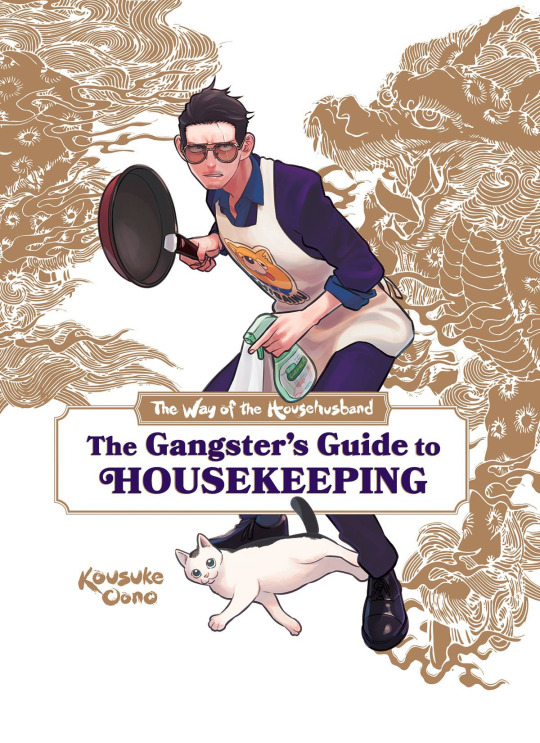
The Way Of The Househusband: The Gangster’s Guide To Housekeeping GN - Kousuke Oono, Laurie Ulster & Victoria Rosenthal
Everyone, from busy office workers and aspiring homemakers to the fiercest members of the yakuza, can gain important life skills from The Way of the Househusband: The Gangster's Guide to Housekeeping! Learn the housekeeping secrets of the legendary gangster, Tatsu, with this practical and humorous book inspired by the popular manga series The Way of the Househusband. This detailed guide includes cleaning tricks to leave your home sparkling, secrets for finding cutthroat deals, schemes for mastering your territory, keys to caring for your gang, and much more. Within these pages you will also find 25 delicious recipes that will satisfy any voracious gangster. Follow these tips and apply the determination of the Immortal Dragon to cooking, cleaning, shopping, and crafting to discover the path to housekeeping success!
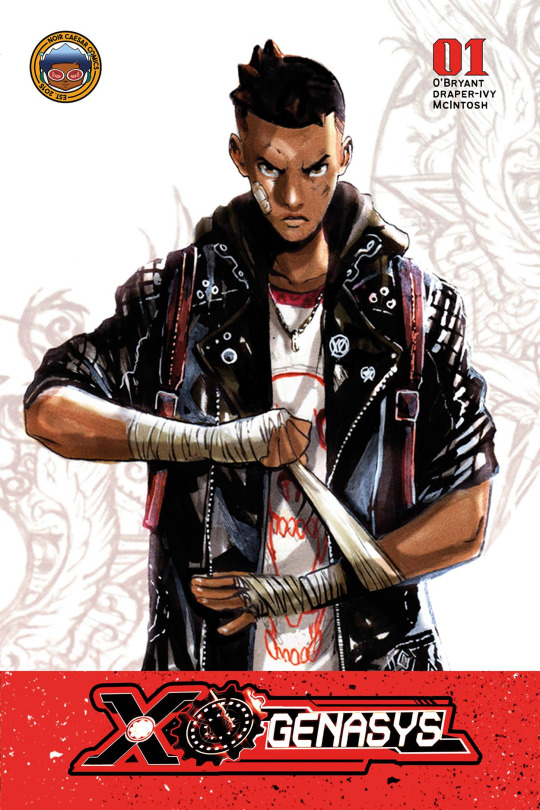
XOGenasys GN Vol 1 - Tre Mcintosh & Nikolas Draper-Ivey
The future has grown into a decadent, overcrowded gang-ridden cesspool. If you're not living uptown, you might as well be dead. Such is the case of Darius Smith, an artistic youth living in the hood, doing his best to avoid trouble and live life. Unfortunately, Darius has a hidden talent-he's an explosive fighter! This makes him the target of many gangs and pits him in many brawls, landing him in the sight of the honorable Timothy Mustafa, a powerful prince. XOGenaSYS is a successful gladiator sport fought with powered exoskeletons, and as the owner of one of the most successful teams in the country, Mustafa wants Darius to become his newest fighter. Can Darius become the next champion? Or will he fall like so many before him?
Whatcha snagging this week, Fantom Fam?
#What's Out This Week?#WOTW#comic#comics#comic book#comic books#manga#Alice Never After#BRZRKR: Poetry Of Madness#The Children Of The Comet#Eight Billion Genies#Immortal Ascension#The Jewish Deli: An Illustrated Guide To The Chosen Food#My Mate Is A Feline Gentleman#Primus 7#Purr Evil#Radiant Pink#Rebel Grrrls#Rivers Of London#Seraph Of The End#Social Fiction#Soichi#Stars In Their Eyes#Tokidoki#The Way Of The Househusband#XOGenasys
3 notes
·
View notes